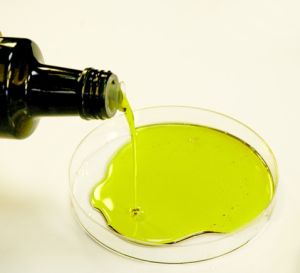10 February 2014. Biologists at University of York in the U.K. developed a new form of hemp plant that produces seeds with oil containing a high volume of oleic acid, a nutritious fatty acid like that found in olive oil. The team led by York’s Ian Graham, who heads the university’s biology department, published its results today online in the Plant Biotechnology Journal.
Graham, with colleagues from York’s Biorenewables Development Centre and Medical University of Wroclaw in Poland, were looking for ways of boosting the commercial value of hemp (Cannabis sativa), a low-input fiber crop, often found in textiles and animal bedding, but needing fewer outside resources, such as fertilizer or pesticides. With rapeseed, known in North America as canola, facing declining yields in the U.K., the researchers sought alternative sources of cooking oil with rapeseed’s nutritional value.
The York team used a combination of advanced genomics and conventional cross-breading to produce the new type of hemp. Whole genomic sequencing and a library of sequence tags enabled the identification of hemp sub-types that produce seeds with lower quantities of poly-unsaturated fatty acids, and instead accumulated more of the mono-unsaturated oleic acid. With a genomics technique known as Targeting Induced Local Lesions in Genomes or TILLING, the team identified alternative genes for production of the more desirable oleic acid.
The researchers used extensive cross-breeding to introduce the alternative, high-oleic genes into the new type of hemp, and achieve a state where the organism can support two identical forms of the same gene. Graham and colleagues then grew samples of the new hemp, called high oleic hemp, in fields for testing in university labs.
The researchers found oil from the new hemp’s seeds to have 80 percent oleic acid, compared to about 10 percent in standard types of hemp, with yields of the new, healthier oil similar to standard hemp. The new hemp oil also had more thermal stability, which means it maintains its properties at higher temperatures, an obvious desirable quality for cooking oil, but also for potential industrial applications.
Because hemp is a low-input crop, it can provide an alternative crop to use in rotations between seasonal cereal grains. The university says further field trials of high oleic hemp are planned in other parts of Europe this year to test for yields under various conditions.
Read more:
- Genetic Mechanism to Increase Tomato Production Explained
- Sugar Beet Genome Sequenced, Human Impact on Species Noted
- Engineered Tomato Helps Cut Contributor to Clogged Arteries
- Dow AgroSciences Developing Insect-Resistant Soybean Traits
- Genetic Solution Identified for Canola Crop Losses
* * *


 RSS - Posts
RSS - Posts
You must be logged in to post a comment.